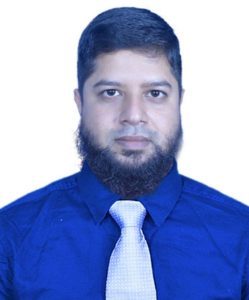
Md. Anisur Rahman, Town Planner, Sirajganj Municipality
What is the environmental situation in your municipality?
Sirajganj municipality has 188,000 inhabitants. It is the capital of Sirajganj district where over 300,000 people live. My municipality has a few parks and ponds; however, many are private and not accessible to the public. The Jamuna River forms the city border on the East. There is a promenade along it and a municipality-maintained amusement park. They get very busy on the weekend. Through the city runs the Katakhali Channel which is supplied by the Jamuna. In the city centre, a path runs along the Channel for walking and cycling. Otherwise, Sirajganj is not very walkable.
Solid waste management is a huge environmental challenge. Like most cities in Bangladesh, we just collect waste and throw it in a landfill. Close to Sirajganj, the Sirajganj Economic Zone is situated. Five to ten years from now, an additional 1 million people will live in our municipality and its periphery. A huge amount of solid waste will be generated. This shows: If we don’t act now, the environmental challenges will only get bigger.
What is your vision for the urban environment in Sirajganj?
We need to understand that environmental development is needed to protect the health and surroundings of our and future generations. With support of the GIZ CRISC project [“Climate Resilient Inclusive Smart Cities”], we created a master plan. Its vision is that “Sirajganj is recognized as being a resilient, safe, healthy, vibrant, prosperous environmentally viable city and a place where all people can fully participate in community life”. I share this vision and we are taking good steps in that direction.
When we were creating the masterplan, we made a valuable experience with population engagement. The results of the drone-based survey that informed the master plan were checked with the population. Surveyors knocked at every door. The population was proud that their opinion was considered. In further consultations, thousands of people shared their feedback. Finally, we launched the master plan with a lot of publicity. People knew about the whole process and were engaged in it.
The municipality, including the mayor, understands that we can only achieve our vision with population engagement. There is a group of young people working on environmental issues. They can add value to the municipal plan and be a helping hand in improving the environment. We also engage the population with formats like town level coordination committees.
What support do you need to achieve this vision?
The municipal administration has several roles to play to improve the environmental management. We must create awareness about environmental management as well as conditions for the population to contribute. And we must put in place measures to protect and restore the environment. Technical and financial cooperation can help us realise these roles.
We want scalable solutions because municipal funding is a challenge. For example, for sustainable waste management, we need separation of waste at the source. I would like to introduce this. To find out how best to do this, I want to start a pilot project for a very small area of Sirajganj, providing four types of bins and training around 300 people to separate the waste. If a pilot project is successful, the municipality can scale it up on its own and make the population and decision-makers aware of the benefits of environmental protection and restoration.
I’m very happy to work with LICA because its objectives are aligned with the vision in our master plan. LICA supports selected city administrations in Bangladesh to improve their urban environmental management: We undergo trainings, exchange among the cities, and establish cooperations with the private sector and civil society. I am interested in building networks and exchanging with other cities. Especially Rajshahi is a role model for me as it has received several awards for being a clean and green city.
As a first concrete step, LICA’s partner cities are each conducting Urban Living Labs. In Sirajganj, a stretch of Kathakali Channel was chosen to implement the lab. The municipality will come together with representatives from various groups of the neighborhood, like the youth and local businesses. Jointly we will develop and implement measures to improve the site. If successful, our environmental solution can be scaled-up in Sirajganj and even be adopted by other cities.

Sirajganj has been selected as a pilot city for Generation Restoration, which is a project financed by BMZ and implemented by UNEP and ICLEI. Congratulations! You recently attended a capacity building and peer-to-peer exchange workshop with participants from all the cities of Generation Restoration. What were your main takeaways?
We discussed the importance of nature-based solutions and urban biodiversity. I took away that a Generation Restoration project should have a holistic approach. For example, in response to the diminishing seagull population at the river Seine, the government of Paris provided ferries with trees on them for the seagulls to breed – and the seagulls returned.
Talking to the participants from the other cities, I understood that each city’s context is unique. The Generation Restoration project will also be implemented at the Katakhali Channel. Our unique challenge is the seasonal fluctuation of the water level. I would like to secure the banks of the Channel using nature-based solutions. This can also beautify the environment and create spaces for recreation. We intend to multiply the benefits of the Generation Restoration project by aligning it with the activities of the Urban Living Lab.
Link to Further Materials
- Generation Restoration pilot projects and planned activities: Generation Restoration Cities (decadeonrestoration.org)
- LICA Project Website
Contact Person
Indira von Gierke
Key Buzzwords
Urban environmental management, nature-based solutions, ecosystems, biodiversity, harmonisation, synergies, interlocking of bilateral and multilateral development cooperation
